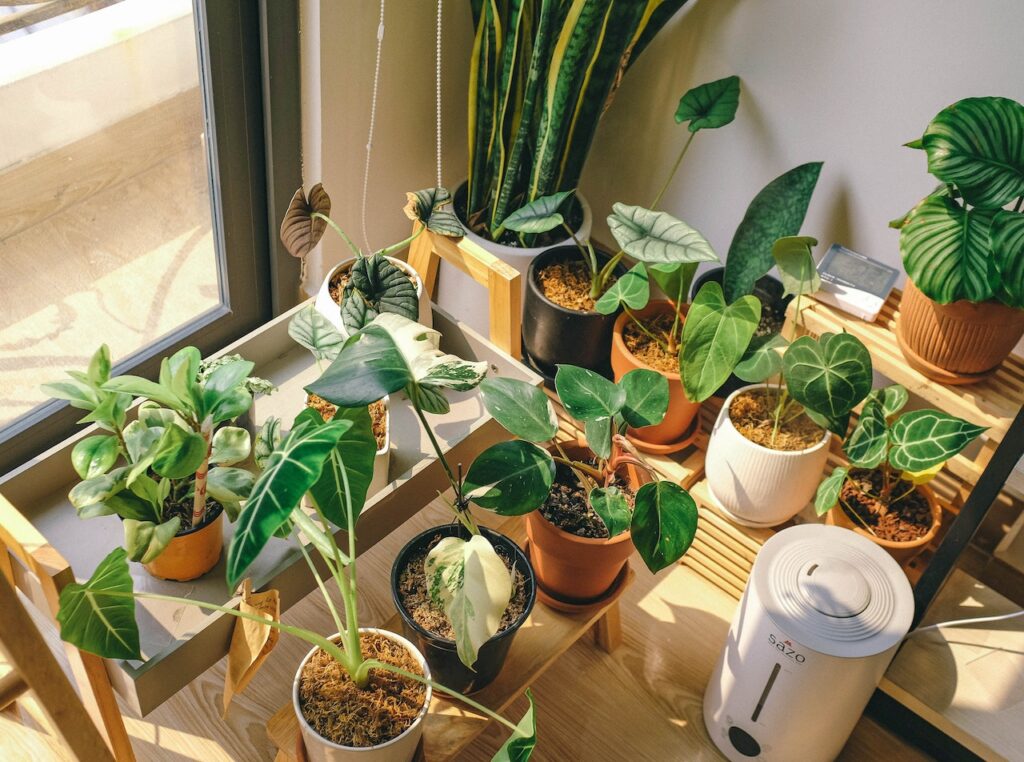In today’s day and age, plant nurseries are popular and successful businesses. However, starting a plant nursery is an immense challenge that necessitates dedication, lengthy hours, and strenuous work, day in and day out. It’s not enough to be acquainted with growing plants; owners of prosperous nurseries must also have a functioning knowledge of plumbing, electricity, equipment, soil types, labor management, packing, shipping, and much more.
We’ll go over all the ins and outs of starting a nursery business.
What are the benefits of starting a nursery business?
How to Start a Plant Nursery

Nursery owners face significant challenges and risks, including floods, freezes, snow, drought, plant diseases, insects, soil types, increasing expenses, and an uncertain economy. As you can imagine, there is much to think about when starting a plant nursery business. Here are just a few key points:
- Before you spend a lot of money, do your research. Invest in books and magazines, visit other places, and join professional groups or organizations. This way you can learn about hiring practices, plant production, and other small business specifics. Attend seminars, take classes, and educating yourself as much as possible.
- Different types of plant nurseries include retail nurseries, which are typically small businesses that sell to individual homeowners, and wholesale nurseries, which are usually larger businesses that sell to landscape contractors, retail stores, growers, distributors, and municipalities. Some plant nurseries may specialize in certain types of plants, such as ornamentals, native plants, or shrubs and trees, while others may focus exclusively on mail order.
- Starting a plant nursery requires careful planning and consideration of various factors. Location is key for successful nurseries, which are typically situated in areas that are easily accessible for people commute home from work. There must be enough space, reliable water source, potential workers, and transportation options available. Competition from other businesses nearby should also be considered.
- To start a plant nursery, you will need to investigate the requirements for permits, licenses, or certificates from your state or local government. You should also speak to an attorney and a tax accountant to learn about zoning, labor relations, environmental issues, inspections, and taxes that may apply to your business. It is also important to develop clear goals, mission, and objectives for your nursery, as lenders will typically require a business plan.
- To start a nursery, you usually need to invest a lot of money. Do you have the funds to start a business, or will you need to take out loans? Are you buying an existing business, or are you starting from scratch? Will you need to construct buildings, greenhouses, or irrigation systems? Will you have the cash flow to support you until the business begins to make a profit?
Steps to Start Your Very Own Nursery
- The first step in starting a plant nursery is harvesting seeds from a fully grown fruit.
- After extracting the seeds, they should be sowed in seedbeds or germination trays for future growth. This step is crucial and should be done carefully.
- The next step is to transfer the saplings to little storage units or polybag pots. Then the transfer of the young saplings should be done at a safe transplanting stage very carefully.
- The mother plant or the main plant used for seed extraction should also be kept as it is used for seasonal propagation.
- It is now time to carefully maintain the saplings, water them in a timely manner, and protect them from pests and other factors.
- You should track everything that affects plant growth, like the required elements in the soil and the best season for growing each species.
- Now that you have completed all the necessary steps, your plants are ready to be put on the market in your nursery.
Steps to Start Earning from Your Nursery

1. Know the people you want to sell to
What type of customer do you want to attract? When will that customer need plants or trees? What types of high-value plants should you grow?
2. Develop a business plan for your plant business.
Can you save money by starting small, as other backyard growers have done? Will you lease or buy land? How many plants can you grow and sell, working by yourself?
Do you offer sales to customers who come in person, or do you only deliver? Do you sell young trees that are still in seeds, or do you only sell fully-grown trees that are already potted?
3. Create a business bank account.
Even if you have a small nursery business, open a business bank account and get a business credit card.
4. Pick a location.
If you’re opening a new business, one of the first decisions you’ll need to make is where to locate your business. There are a few things to consider when choosing a location, such as:
- foot traffic and visibility
- proximity to suppliers
- parking and access
- zoning regulations
The best location for your business will depend on a number of factors, so it’s important to do your research before making a decision.
A small-town nursery will be successful if it’s easy to find and accessible to buyers from nearby larger towns. To achieve this, the nursery must have a good space to grow the plants, as well as a good place to sell them. The perfect balance of these two factors will make the nursery successful.
Check out these beautiful properties for sale in Virginia and North Carolina!
5. Register your business.
When you register your business, you will need to choose a brand name and register it with the appropriate authorities. This will help to protect your brand and ensure that no one else can use it. You will also need to choose a business name that is distinct from your brand name and register it with your secretary of state. This is important because it will allow you to check to see if your chosen business name is already taken.
6. Choose a business entity.
There are four common business entities in the United States: sole proprietorship, partnership, corporation, and limited liability company. Before choosing a business entity, consult with an attorney or accountant to discuss the pros and cons of each.
Many small businesses choose to create a limited liability company, or LLC. This type of business entity can help to protect your personal assets by creating a separation between your business and yourself as an individual.
7. Acquire permits and licenses and sort your taxes.
It is important to obtain the necessary permits and licenses before you start your business. Otherwise, you may be fined or even shut down. The type of permits and licenses you need will depend on the type of business you are running. For example, if you are opening a restaurant, you will need a food permit. If you are selling alcohol, you will need a liquor license. Make sure to do your research and obtain all the permits and licenses you need before you open your business.
If you’re moving plants across state lines, you’ll need a permit from the state Department of Agriculture. You’ll also need a permit from the Department of Agriculture if you’re importing or exporting plants to other countries.
In order to sell flowers and other plants, most states require that you obtain a Nursery Floral License (for each of your locations). This license allows you to sell nursery stock, which is defined as “living trees, shrubs, vines, and other perennial plants.” In some states, you may also need to obtain a separate License to Sell Nursery Stock.
Taxes can be a confusing and frustrating process, but it’s important to stay on top of them to avoid any penalties. Make sure to keep good records throughout the year so you can easily file your taxes when the time comes. You can also use tax software to help you prepare and file your taxes.
In addition to sales tax, you’ll pay real estate tax on any land you purchase for your operations. Real estate taxes are typically based on the value of the property, and are paid to the local government.
If you are a sole proprietor, you will need to use a Schedule C to report your income and expenses. This document is used to calculate your profit or loss from business activities.
When you first start your business, it is a good idea to hire a tax professional. They can help you determine the best way to set up your business and make sure you are compliant with all tax laws. This will help you avoid any penalties or fines down the road.
8. Get insurance.
When you first start your business, it is a good idea to hire a tax professional. They can help you determine the best way to set up your business and make sure you are compliant with all tax laws. This will help you avoid any penalties or fines down the road.
You may want to consider getting health insurance to help pay for medical care. There are many different types of health insurance, so be sure to research your options to find the best one for you.
Some businesses may need to purchase “business specific” insurance in addition to general Business General Liability Insurance. For example, crop insurance may be necessary for businesses that grow outdoors on a large scale. This type of insurance can help cover damages from catastrophic events such as hail or floods.
9. Scout for suppliers and buy equipment.
If you’re starting a business, you’ll need to purchase the necessary equipment and find suppliers. This can be a challenge, but there are a few things you can do to make it easier.
First, research the type of equipment you’ll need and find out where you can buy it. You may be able to find good deals on equipment by shopping online or contacting manufacturers directly.
Once you’ve identified potential suppliers, contact them and ask for quotes. Be sure to compare the prices and terms of each quote before making a decision.
Finally, remember that you can always negotiate with suppliers. If you’re able to demonstrate that you’re a good customer, they may be willing to give you a better price.
The equipment used for watering plants or crops is varied and depends on the scale of the operation. For small gardens or potted plants, a watering can or hose may be sufficient. For larger areas, a sprinkler system or irrigation network may be required.
10. Choose your irrigation method.
The type of irrigation system you choose will depend on a number of factors, including the size and layout of your garden, the type of plants you are growing, and your budget.
There are four main types of irrigation systems:
- Sprinklers
- Drip irrigation
- Soaker hoses
- Hand watering
Sprinklers are the most common type of irrigation system. They are relatively simple to install and can be used to water large areas quickly. However, they can also be wasteful of water if not properly adjusted.
Drip irrigation is a more efficient type of irrigation, as it delivers water directly to the roots of the plants. It can be more complex to install than a sprinkler system, but it can save water and money in the long run.
Soaker hoses are a type of drip irrigation in which water seeps out of holes along the length of the hose. They are easy to use and require minimal setup, but they can be less efficient than other types of drip irrigation.
Hand watering is the simplest and most efficient type of irrigation, but it is also the most time-consuming. If you have a small garden or only a few plants, hand watering may be the best option.
Assuming you have the necessary land and tools to dig a well, this can be a great idea to explore. The cost of water is always rising, and having your own well can help insulate you from those costs. Not to mention, it can be a great way to have a consistent source of water for your home or business.
To water your plants, you can either hand-carry water if you’re operating in a smaller space, or set up an irrigation system if you have a larger space. Irrigation systems can be automatic or manual, and can be an efficient way to water your plants without having to do it by hand.
11. Advertise your business online.
Developing an online presence is a great way to connect with potential customers and market your business. While there are many ways to create an online presence, some of the most common include creating a website, developing a social media strategy, and creating online content. By taking the time to develop an online presence, you can reach a wider audience and build a more successful business.
Creating a professional website with plenty of color images is a great way to attract attention and get noticed online. You can increase your visibility even further by linking an email address to your website, so that people can easily get in touch with you. Finally, make sure you pop up on a Google search by optimizing your site for search engine ranking.
There are a number of ways to use social media to promote your business. You can create a Facebook page for your business and share content that is relevant to your products or services. You can also use Facebook ads to target potential customers who may be interested in what you have to offer. Additionally, you can use other social media platforms such as Twitter and Instagram to share content and reach a wider audience.
12. Set your prices.
Setting your prices can be a tricky business. You want to charge enough to cover your costs and make a profit, but you don’t want to scare away potential customers. There are a few things you can do to ensure you’re pricing your products correctly.
- First, do your research. Look at what your competition is charging and get an idea of what the going rate is for your product or service. You don’t want to be too low or too high – find a happy medium.
- Second, consider your costs. How much did it cost you to produce the product or provide the service? Make sure you’re factoring in things like materials, labor, and overhead.
- Third, think about your target market. Who are you selling to? If you’re selling to a high-end market, you can charge more than if you’re selling to a budget-conscious market.
- Fourth, consider your profit margin. How much profit do you want to make on each sale? A good rule of thumb is to aim for a 20% profit margin.
- Fifth, set your prices and stick to them. Once you’ve decided on a price, don’t be afraid to stick to it. If you start discounting your products or services, it will be hard to raise your prices again in the future.
Keep these tips in mind when setting your prices, and you’ll be sure to stay competitive and make a healthy profit.
13. Sell your products.
Marketing your business is critical to the success of your enterprise. There are a number of ways to market your business, including online marketing, print marketing, and word-of-mouth. The key is to find the right mix of marketing tools that will reach your target market.
Online marketing is a great way to reach a large number of potential customers with minimal expense. There are a number of ways to market your business online, including search engine optimization, pay-per-click advertising, and social media marketing.
Another option is to join a farmers’ market. It is a great way to connect with local buyers who are interested in fresh, locally-grown produce. You’ll be able to sell your crops directly to consumers, and you’ll have the opportunity to build relationships with customers.
Whatever option you choose, make sure you do your research and price your crops competitively. With a little effort, you should be able to sell your crops and earn a good profit.
Reliable delivery is essential for plant businesses- especially if you want to keep your customers happy! A refrigerated delivery system is the best way to ensure that your plants are healthy when they reach their destination.
Ready to start your nursery business? Check out these beautiful properties for sale in Virginia and North Carolina!





